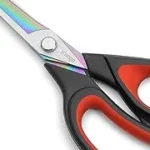Do you ever wonder why Pokemon cards are so expensive? It’s a question that many fans and collectors alike have asked. Well, get ready to dive into the fascinating world of Pokemon card pricing as we uncover the reasons behind their high price tags.
Whether you’re a seasoned collector or just getting started, it’s hard not to be intrigued by the rising prices of Pokemon cards. From rare holographics to exclusive promotional cards, there’s something about these little pieces of cardboard that captures our imagination and drives up their value.
In this article, we’ll explore the factors that contribute to the high cost of Pokemon cards, from scarcity and demand to rarity and collectability. So buckle up, trainers, as we delve into the exciting realm of Pokemon card economics!
Wondering why Pokemon cards are so expensive? It’s a combination of factors that contribute to their high price. Rarity plays a significant role, with certain cards being extremely rare and highly sought after. Additionally, collector demand, limited releases, and popularity of the Pokemon franchise all contribute to the high prices. The condition of the card and its potential for future value also influence the price tag. So, if you’re wondering why Pokemon cards can be so pricey, these factors are the key contributors.

Why Are Pokemon Cards So Expensive?
Pokemon cards have been capturing the imaginations of fans young and old for decades. These collectible trading cards have become increasingly popular in recent years, with some cards selling for exorbitant prices. So, what exactly drives the high prices of Pokemon cards? In this article, we will explore the factors that contribute to the steep costs and delve into the fascinating world of Pokemon card collecting.
The Rarity Factor
One of the primary reasons why Pokemon cards can be so expensive is their rarity. Just like any collectible item, scarcity plays a significant role in the value of these cards. Certain cards are released in limited quantities and become highly sought after by collectors. Whether it’s a rare holographic card or a card featuring a rare Pokemon, rarity drives up the demand and subsequently the price. The limited supply coupled with the high demand from avid collectors creates a competitive marketplace where prices skyrocket.
Additionally, the rarity of Pokemon cards can be influenced by the set they belong to. Pokemon cards are released in various expansion sets, each with its own unique pool of cards. Some sets introduced iconic and powerful Pokemon, making the cards from those sets more desirable. As a result, collectors are willing to pay top dollar for cards from these sought-after sets, further driving up the prices.
In recent years, Pokemon cards have experienced a resurgence in popularity, attracting new and nostalgic collectors alike. The increased demand, coupled with the finite supply of older cards, has created a perfect storm where prices have reached unprecedented heights. It is not uncommon to see individual cards selling for thousands or even tens of thousands of dollars, especially if they are exceptionally rare or in pristine condition.
The Grading Process
To truly understand the staggering prices of some Pokemon cards, we must delve into the world of professional card grading. Card grading is a process that involves sending cards to reputable grading companies, such as PSA (Professional Sports Authenticator), to have their condition evaluated and assigned a grade.
The grading process takes into account factors such as centering, corner wear, surface condition, and overall card quality. Cards that receive a high grade, such as PSA 10 (Gem Mint), are incredibly valuable as they are considered to be in pristine condition. These graded cards are the holy grail for collectors, and their rarity and condition significantly impact their market value.
Grading has become an integral part of the Pokemon card market, as it provides buyers with a reliable and standardized assessment of a card’s condition. Collectors are willing to pay a premium for graded cards because of the added assurance of quality and authenticity. This added value contributed by the grading process further drives up the prices of Pokemon cards.
The Influence of Pop Culture
The influence of pop culture is another factor that contributes to the high prices of Pokemon cards. Over the years, Pokemon has become an iconic part of popular culture, capturing the hearts of millions of fans worldwide. With the franchise’s continued success in various forms of media, from video games to movies and TV shows, Pokemon cards have gained even more popularity.
When a beloved Pokemon character is featured prominently in popular culture, it often leads to increased demand for cards featuring that character. The scarcity of these character-specific cards combined with the heightened demand creates a situation where prices surge. Collectors and fans alike are willing to pay a premium to own a piece of the Pokemon phenomenon, resulting in a thriving market for Pokemon cards.
In conclusion, the high prices of Pokemon cards can be attributed to factors such as rarity, card grading, and the influence of popular culture. As the demand for Pokemon cards continues to grow, collectors can expect prices to climb even higher. However, it is essential to remember that while Pokemon cards can be a valuable investment, they are ultimately a form of entertainment and should be enjoyed by fans of all ages.
Investing in Pokemon Cards: Tips and Strategies
With the skyrocketing prices of Pokemon cards, many collectors are considering investing in these collectibles. However, it’s crucial to approach Pokemon card investing with careful consideration and a strategic mindset. In this section, we will provide you with some valuable tips and strategies to help you navigate the world of Pokemon card investment.
Research, Research, Research
Before jumping into the world of Pokemon card investing, it’s vital to do your research. Familiarize yourself with the different sets, card rarities, and market trends. Understand which cards are highly sought after and what factors contribute to their skyrocketing prices. Stay up to date with the latest news surrounding Pokemon cards and any upcoming releases that may impact the market.
By conducting thorough research, you can make informed decisions and avoid costly mistakes. Remember, knowledge is power in the world of Pokemon card investing.
Focus on Rarity and Condition
When it comes to investing in Pokemon cards, rarity and condition are key factors to consider. As mentioned earlier, cards with limited availability and those in pristine condition tend to command higher prices. Focus on acquiring cards that are rare and in excellent condition to maximize their investment potential.
Consider investing in graded cards, as they offer added assurance of quality and authenticity. Grading companies like PSA provide a standardized assessment of a card’s condition, which can impact its market value. However, be aware that graded cards often come at a premium, so factor in the cost of grading when making investment decisions.
Diversify Your Collection
Another crucial strategy in Pokemon card investing is to diversify your collection. Instead of focusing solely on one set or type of card, consider expanding your portfolio. Investing in a variety of cards, sets, and characters will help minimize risk and increase the chances of finding hidden gems that appreciate in value.
It’s also essential to strike a balance between investing in popular cards and overlooked or undervalued ones. While owning popular cards can be exciting, they often come with higher price tags. By exploring lesser-known cards that may have potential for growth, you can uncover hidden opportunities in the market.
Purchase from Reputable Sources
When investing in Pokemon cards, it’s crucial to purchase from reputable sources. Avoid purchasing cards from unknown sellers or platforms with a questionable reputation. Look for established retailers, auction houses, or reputable online marketplaces that offer buyer protection and authenticity guarantees.
Keep an eye out for counterfeit cards, as they can severely impact the value of your collection. Research common signs of counterfeit Pokemon cards and be vigilant when making purchases. If a deal seems too good to be true, it likely is.
The Future of Pokemon Cards: Trends and Evolution
The Pokemon card market continues to evolve rapidly, with new trends and developments shaping the industry. In this section, we will explore some of the emerging trends and the future outlook for Pokemon cards.
The Rise of Digital Collectibles
One of the exciting developments in the Pokemon card market is the rise of digital collectibles. In recent years, digital trading card games (TCGs) such as Pokemon TCG Online have gained popularity. These digital platforms allow players to collect and trade virtual Pokemon cards in an online environment.
While physical Pokemon cards will always hold a special place in the hearts of collectors, digital collectibles offer new opportunities and experiences. With the increasing digitization of various industries, it is not surprising to see Pokemon cards embracing the digital realm. As more players and collectors embrace digital TCGs, we can expect to see a significant impact on the Pokemon card market.
Continued Expansion of the Pokemon Franchise
The Pokemon franchise shows no signs of slowing down. With new video game releases, TV shows, movies, and merchandise, the popularity of Pokemon is projected to grow further. As the franchise expands and introduces new characters and Pokemon, collectors can expect to see a surge in demand for related cards.
This continued expansion creates exciting opportunities for collectors to invest in new releases and capitalize on emerging trends. Keeping a close eye on the evolving Pokemon universe and aligning investments accordingly can lead to significant returns in the future.
Increased Focus on Alternative Collectibles
While Pokemon cards have traditionally been the primary focus of collectors, there is a growing trend towards alternative collectibles within the Pokemon universe. Some collectors are branching out to other forms of Pokemon memorabilia, such as plush toys, figurines, and original artwork.
The appeal of these alternative collectibles lies in their uniqueness and the emotional connection they offer. While the market for these items is still developing, they present an intriguing avenue for collectors looking to diversify their portfolios. Investing in alternative collectibles can be an exciting and potentially profitable venture for Pokemon enthusiasts.
In conclusion, the world of Pokemon cards continues to captivate collectors with its rarity, grading process, and the influence of popular culture. As the market evolves and new trends emerge, it’s important for collectors to stay informed and make strategic investment decisions. Remember to research, focus on rarity and condition, diversify your collection, and purchase from reputable sources. By following these tips and keeping an eye on the future of Pokemon cards, you can navigate the world of Pokemon card investing with confidence.
Key Takeaways: Why Are Pokemon Cards So Expensive
- Pokemon cards are highly sought after by collectors and players alike.
- The rarity and condition of a card greatly affect its price.
- Scarcity of certain cards, such as limited edition or promotional cards, drives up their value.
- Pokemon cards have become increasingly popular over the years, causing a surge in demand.
- The popularity of competitive Pokemon gameplay has also contributed to the rise in card prices.
Frequently Asked Questions
Pokemon cards have gained immense popularity over the years, with some of these cards becoming incredibly valuable. But what exactly makes them so expensive? Let’s find out!
1. What factors contribute to the high prices of Pokemon cards?
Several factors contribute to the high prices of Pokemon cards. Rarity is one of the main drivers – cards that are difficult to find or have limited quantities can fetch higher prices. Additionally, the card’s condition plays a significant role. Cards in excellent condition, known as “gem mint,” can command a higher price due to their rarity.
Another contributing factor is the card’s desirability among collectors. Certain cards, like those featuring rare or popular Pokemon, evolutions, or special editions, are in high demand. These coveted cards often sell for a premium price due to their popularity among collectors.
2. Are older Pokemon cards more expensive than newer ones?
In general, older Pokemon cards tend to be more expensive than newer ones. This is because some of the older cards have become highly sought after by collectors and have gained rarity over time. The limited supply of these vintage cards drives up their value in the market.
Add to that the nostalgia factor – many collectors grew up with Pokemon and have a sentimental connection to the older cards. This emotional attachment often leads to higher demand and, subsequently, higher prices for the older cards. However, there are exceptions to this rule, as some newer cards can also be quite valuable if they possess unique features or have limited availability.
3. Can the popularity of the Pokemon franchise impact card prices?
Absolutely! The popularity of the Pokemon franchise has a significant influence on card prices. When new Pokemon games or movies are released, it often sparks renewed interest in collecting Pokemon cards. This surge in demand can cause prices to rise as people rush to get their hands on the latest cards.
Moreover, the success of competitive Pokemon trading card game tournaments can also impact card prices. If certain cards are deemed highly effective in tournament play, their value may increase as players seek to build winning decks. The combination of both the franchise’s overall popularity and the competitive scene can create a perfect storm for inflated card prices.
4. Could limited editions and special releases affect the cost of Pokemon cards?
Definitely! Limited editions and special releases can greatly impact the cost of Pokemon cards. Pokemon sets often feature unique and rare cards released in limited quantities. These special editions may include alternate artwork, holographic patterns, or promotional cards tied to specific events, such as tournaments or celebrations.
Due to their exclusivity, these limited editions are highly sought after by collectors, which drives up their prices. Collectors and fans alike are willing to pay a premium to add these special cards to their collections, leading to increased demand and higher costs in the market.
5. Are there any other factors besides rarity that determine the value of Pokemon cards?
While rarity is a significant factor in determining the value of Pokemon cards, there are other crucial factors to consider. The condition of the card plays a vital role – cards in near-mint or mint condition are generally more valuable than those with visible wear or damage.
Additionally, the relevance of the card in competitive play can also affect its value. Cards used in popular and effective strategies within the Pokemon trading card game will likely have higher demand and therefore a higher market value. The card’s overall popularity, artwork, and the specific Pokemon it features can also contribute to its value among collectors.

Why Are Pokémon Cards So Expensive?!
Summary
Pokemon cards are expensive because of their rarity, popularity, and collectible nature.
The scarcity of certain cards increases their value, and the demand from collectors drives up prices.
Additionally, special editions, limited releases, and older cards are highly sought after, making them more expensive.
Interestingly, the value of Pokemon cards can fluctuate over time, so it’s important to keep an eye on the market before buying or selling.
Remember, though, that the real value of Pokemon cards lies in the joy they bring to fans and collectors, rather than their price tag.






